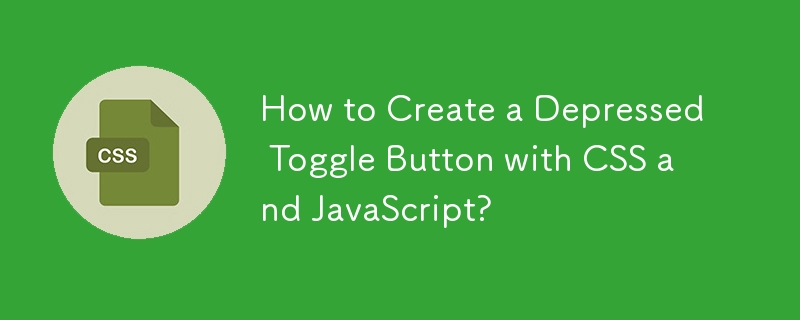Found a total of 10000 related content

Embracing Tailwind CSS: A New Era of Styling for Web Developers
Article Introduction:Let's start to get rid of that forever long CSS file and start enhancing your styling experience with Tailwind CSS! It makes styling your code directly in your html or React component easy to do and easy to organize.
What is Tailwind CSS?
Tailwind C
2024-10-21
comment 0
418

What is BEM (Block, Element, Modifier) methodology, and how does it help in writing scalable CSS?
Article Introduction:BEM is a CSS naming specification that creates reusable components and maintains extensible stylesheets. 1. Block is an independent component, such as a button or a menu; 2. Element is a child element attached to a Block, such as a menu item; 3. Modifier is a sign that changes appearance or behavior, such as the disabled state of a button. Through the naming method of block-name__element-name--modifier-name, improve code predictability, avoid conflicts, facilitate collaboration and component reuse. For example, use .btn and .btn--secondary to implement basic buttons and variants. When applying, you need to pay attention to identifying blocks, use double underscores and double hyphens correctly, and avoid oversight.
2025-06-06
comment 0
450
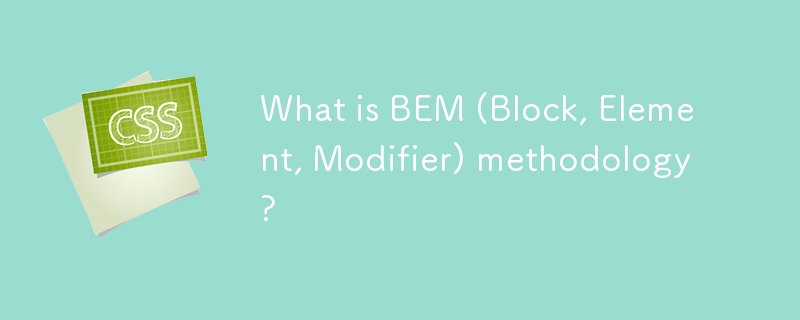
What is BEM (Block, Element, Modifier) methodology?
Article Introduction:BEM is a naming specification for writing maintainable HTML and CSS. 1. Block is an independent and reusable component, such as .menu or .button, which should be named semantically; 2. Element is an integral part of Block, named such as .menu__item, which should not exist alone and should not be nested too deeply; 3. Modifier represents state or variant, such as .button--primary, which should only define different styles and avoid complex combinations; BEM improves naming clarity, reduces conflicts, facilitates maintenance and unifies team structure.
2025-06-24
comment 0
851

How to implement Bootstrap ordered lists?
Article Introduction:Bootstrap does not have a dedicated ordered list component, it implements ordered lists through CSS classes using native HTML <ol> and <li> tags. The easiest way is to use <ol> and <li> directly, and then use Bootstrap's classes (such as .list-group and .list-group-item). More flexible style control can be implemented through custom CSS or Less/Sass, with attention to responsive design and browser compatibility.
2025-04-07
comment 0
641

Explain how styling is handled in React components (CSS-in-JS, Modules, etc.).
Article Introduction:There are three common style processing methods in React: CSS-in-JS, CSSModules and global CSS. CSS-in-JS directly writes component styles through JavaScript files, supporting variables, conditions and dynamic styles, such as styled-components; CSSModules implements modular CSS through .module.css file to avoid class name conflicts; global CSS is suitable for small projects or legacy systems, but naming conflicts should be paid attention to. The selection should be based on project size and team preferences: select CSS-in-JS when dynamic style is needed, and select CSSModules when using normal CSS and module scope is needed. Small projects or old systems can
2025-07-15
comment 0
496
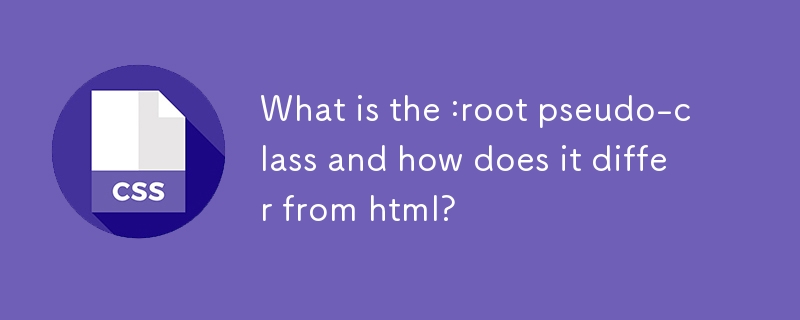
What is the :root pseudo-class and how does it differ from html?
Article Introduction::root is used in CSS to select document root elements, usually equivalent to tags in HTML, but with higher specificity. 1.:root is suitable for defining global CSS variables, such as --main-color; 2. It provides higher priority to avoid style conflicts; 3. Still applicable in elementless documents (such as XML); 4. It is easier to maintain and dynamically modify topics when combined with component frameworks. Compared to using the html selector directly, :root improves code maintainability and consistency, and is especially suitable for complex projects.
2025-06-25
comment 0
219

How to insert pictures on bootstrap
Article Introduction:There are several ways to insert images in Bootstrap: insert images directly, using the HTML img tag. With the Bootstrap image component, you can provide responsive images and more styles. Set the image size, use the img-fluid class to make the image adaptable. Set the border, using the img-bordered class. Set the rounded corners and use the img-rounded class. Set the shadow, use the shadow class. Resize and position the image, using CSS style. Using the background image, use the background-image CSS property.
2025-04-07
comment 0
1015

How to use utility-first CSS frameworks like Tailwind with Vue?
Article Introduction:The key to using Tailwind in Vue projects is to configure correctly and divide the labor properly. First, install Tailwind and its dependencies; second, configure the content paths of PostCSS and Tailwind; then introduce the basic style of Tailwind in global CSS; finally, use the Tailwind style directly through class in component templates, and optimize the development experience through: class dynamic binding, abstract commonly used combinations as components, and rational use of @apply, etc.
2025-07-01
comment 0
209

Using Bootstrap Components in React: A Step-by-Step Tutorial
Article Introduction:There are two ways to use Bootstrap components in React projects: 1) CSS and JavaScript of the original Bootstrap; 2) Use libraries designed specifically for React such as react-bootstrap or reactstrap. 1) Install Bootstrap through npm and introduce its CSS file in the entry file, and then use the Bootstrap class name in the React component. 2) After installing react-bootstrap or reactstrap, directly use the React components it provides. Use these methods to quickly build a responsive UI, but pay attention to style loading and JavaScript
2025-05-05
comment 0
954
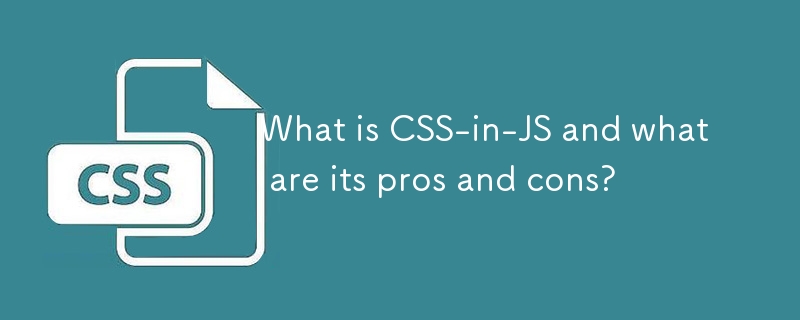
What is CSS-in-JS and what are its pros and cons?
Article Introduction:CSS-in-JS is a method of directly managing component styles through JavaScript. Its core advantages include 1. Scope styles avoid conflicts, 2. Dynamic styles are more flexible, and 3. Rich tool support. It improves maintainability by binding styles to components, and achieves efficient development with libraries such as styled-components, emotion, etc., but it also has disadvantages such as runtime performance overhead and increased build time. It is suitable for project scenarios that require highly dynamic or componentization.
2025-06-27
comment 0
460

How to add icons to Bootstrap list?
Article Introduction:How to add icons to the Bootstrap list: directly stuff the icon into the list item <li>, using the class name provided by the icon library (such as Font Awesome). Use the Bootstrap class to align icons and text (for example, d-flex, justify-content-between, align-items-center). Use the Bootstrap tag component (badge) to display numbers or status. Adjust the icon position (flex-direction: row-reverse;), control the style (CSS style). Common error: The icon does not display (not
2025-04-07
comment 0
768

Setting Custom Mouse Pointer Icons Using CSS cursor Property
Article Introduction:Replacing the mouse pointer style with CSS can be achieved with built-in cursor and custom pictures. 1. Built-in cursor styles include auto, default, pointer, text, wait, help, and directly set such as button{cursor:pointer;}; 2. Custom images need to use url() to specify .cur or .png files, and provide fallback solutions, such as .custom-cursor{cursor:url('icon.cur'),auto;}; 3. You can set hot spots such as cursor:url('pointer.cur')1010,pointer; 4. Apply to games, creative websites or special
2025-07-07
comment 0
801
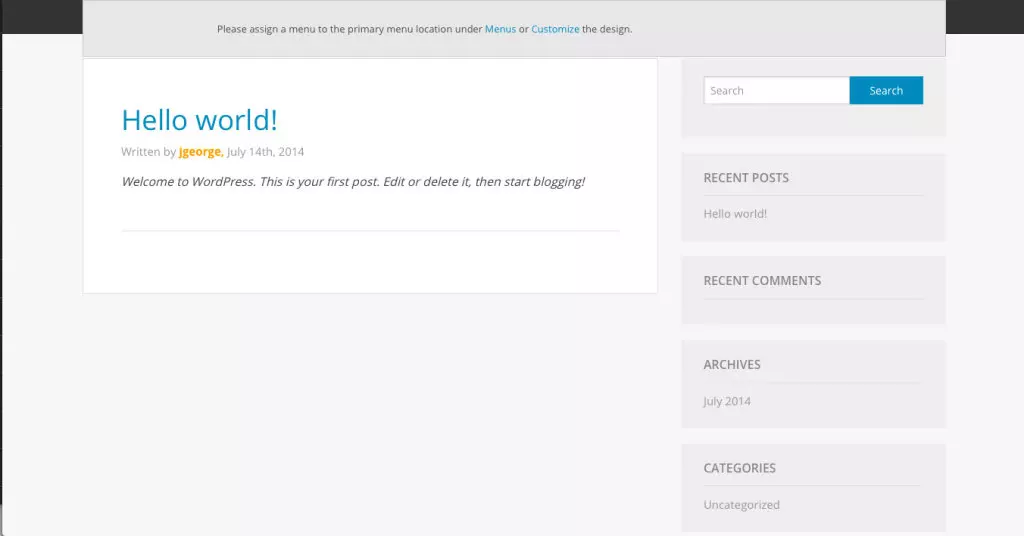
Reverie: A Foundation Based WordPress Starter Theme
Article Introduction:Reverie: A WordPress Introduction Theme Based on Foundation Framework
Reverie is a WordPress introductory theme based on the ZURB Foundation framework, which provides a solid foundation for theme development, including responsive mesh, typography, button styles, and other components. Its lightweight and minimalist design can improve website performance.
Custom Reverie
You can modify CSS and PHP files directly or use WordPress customizer to make simpler changes. This theme supports sub-themes, allowing you to make changes without affecting the original theme file, making it easier to update the theme without losing custom settings.
Reverie to developers
2025-02-17
comment 0
719
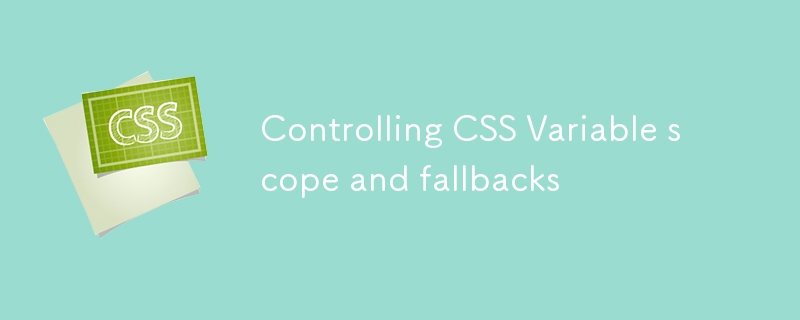
Controlling CSS Variable scope and fallbacks
Article Introduction:Controlling the scope of CSS variables can avoid naming conflicts and improve maintenance. 1. Define the variable in a specific parent element rather than in root, such as .button{--btn-bg:#007bff;}, restrict the variable to only act on the component and its child elements; 2. Use fallback value to ensure that there is a default substitution when the variable is not defined, such as color:var(--text-color,#333); 3. Use nesting priority to achieve style override, such as .card.dark internal redefinition --bg and combine naming specifications to reduce the possibility of conflict, thereby improving the flexibility and stability of the style.
2025-07-07
comment 0
292

Exploring the Shadow DOM Concept in Relation to HTML Structure
Article Introduction:ShadowDOM is a browser feature that allows developers to attach independent DOM trees to an element in the page, thereby achieving isolation of structure and style. 1. It prevents styles and scripts from conflicting by creating hidden subtrees; 2. Internal elements cannot be directly accessed or modified by external sources, encapsulation and maintainability of components; 3. Supports content projection and theme customization using and CSS variables; 4. Commonly used in WebComponents, third-party component libraries, and scenarios that require strong encapsulation; 5. Suitable for building reusable and non-interference to global UI components, but may not be necessary in small projects.
2025-07-08
comment 0
485

Adopting CSS Logical Properties for Internationalization and Flexibility
Article Introduction:CSS logic attributes are a style tool that automatically adjusts layout according to the direction of content writing. They are different from traditional physical direction properties such as margin-left, but use logical directions, such as margin-inline-start, which can automatically adapt to left and right margins according to language direction. Common logical properties include inline (in-row direction) and block (block level direction), such as padding-inline-start and margin-block-end. Its advantage is that when dynamic text direction changes in international projects, it reduces redundant styles and improves component reusability. When applying, you need to pay attention to browser compatibility, debugging intuition and naming habits. In actual cases, the button can be set to a
2025-07-12
comment 0
441

CSS Custom Properties (Variables) for Theme Management
Article Introduction:There are three reasons for using CSS variables for topic management: 1. Dynamic modification capabilities, 2. Support scope control, 3. Can be operated by JavaScript; it is more powerful than traditional preprocessor variables. When organizing the theme variable structure, it should be stored in categories according to module or purpose, such as color, font size, spacing, etc., and switch themes by class names, such as .theme-light and .theme-dark. It is recommended to combine JavaScript operation class names with dynamic switching themes, such as setting document.body.className, which can also directly set variables but are more suitable for personalized customization. Notes include: 1. Pay attention to the variable scope. You can define local variables in: root definition global variables or component containers.
2025-07-18
comment 0
828

How does HMR work in Vue development server?
Article Introduction:HMR improves development efficiency through local update modules in Vue, and its working principle depends on construction tools such as Vite or Webpack. Taking Vite as an example, it uses the browser's native ES module system, and after the file is modified, it notifies the client that only reloads the change module and its dependencies through WebSocket, and triggers the update logic. For Vue single file components: 1. Template modification will recompile and replace the rendering function, retaining the state; 2. Script modification will try to retain the instance state and replace the new logic; 3. Style modification will directly inject the new CSS. Common causes of HMR failure include state loss, root component update failure, dependency incorrect declaration, and third-party library incompatibility. Solutions are: withdraw from the state to the thermally replaceable part to avoid frequent
2025-07-12
comment 0
794

